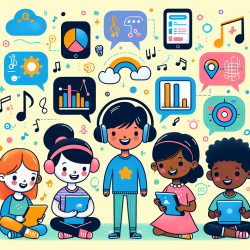Introduction: The Heart of IEP Planning
As Speech Language Pathologists (SLPs), we play a pivotal role in shaping the communication skills of children, especially those who require individualized education programs (IEPs). IEP meetings are a cornerstone in this journey, where we collaborate with educators, parents, and other professionals to tailor educational strategies that meet each child's unique needs. In this blog, we'll explore data-driven approaches to IEP planning and the role of telepractice in enhancing outcomes for children.
Data-Driven Decision Making in IEPs
IEP planning is most effective when it is grounded in solid data. By utilizing a variety of assessment tools and progress monitoring techniques, SLPs can create comprehensive profiles of each child's abilities and challenges. This data is crucial in setting realistic, measurable goals and determining the most effective interventions.
- Assessment Tools: Utilize standardized tests, observational checklists, and language samples to gather baseline data.
- Progress Monitoring: Regularly track the child's progress through systematic data collection, ensuring that interventions are effective and goals are being met.
- Collaborative Input: Incorporate insights from teachers, parents, and the child to gain a holistic understanding of the child's needs and progress.
The Role of Telepractice in IEP Meetings
Telepractice has emerged as a powerful tool in delivering speech therapy services, particularly in the context of IEP meetings. With advancements in technology, online therapy services like those offered by TinyEYE have made it possible to reach children in diverse settings, ensuring continuity of care and collaboration.
Telepractice offers several advantages in the IEP process:
- Accessibility: Overcomes geographical barriers, allowing for consistent therapy sessions and participation in IEP meetings from any location.
- Flexibility: Offers scheduling convenience for parents and educators, facilitating more frequent and timely interactions.
- Enhanced Engagement: Interactive online tools can increase engagement and motivation for children during therapy sessions.
Creating Impactful IEP Goals
Setting effective IEP goals is critical for achieving meaningful outcomes. Goals should be SMART: Specific, Measurable, Achievable, Relevant, and Time-bound. Here are some tips for crafting impactful IEP goals:
- Specificity: Clearly define what the child will achieve, focusing on observable behaviors.
- Measurability: Use quantifiable criteria to track progress, such as frequency or accuracy of a skill.
- Achievability: Set realistic goals that challenge the child without causing frustration.
- Relevance: Align goals with the child's educational and personal development needs.
- Time-bound: Establish a clear timeframe for achieving each goal, with regular check-ins to assess progress.
Conclusion: The Path Forward
IEP meetings are a collaborative effort that requires precision, passion, and a commitment to data-driven decision-making. By leveraging the power of telepractice and adhering to evidence-based strategies, SLPs can significantly enhance the educational experiences of children. As we continue to innovate and adapt, our ultimate goal remains clear: to empower young minds and unlock their full potential.










